Grapes can be cultivated in USDA zones 4-10, almost anywhere in the continental USA. Today, more than 99 percent of the Grapes grown commercially in the United States come from California. With 81 varieties grown, California Grapes come in three colors – green, red, and black – and are available from May to January.
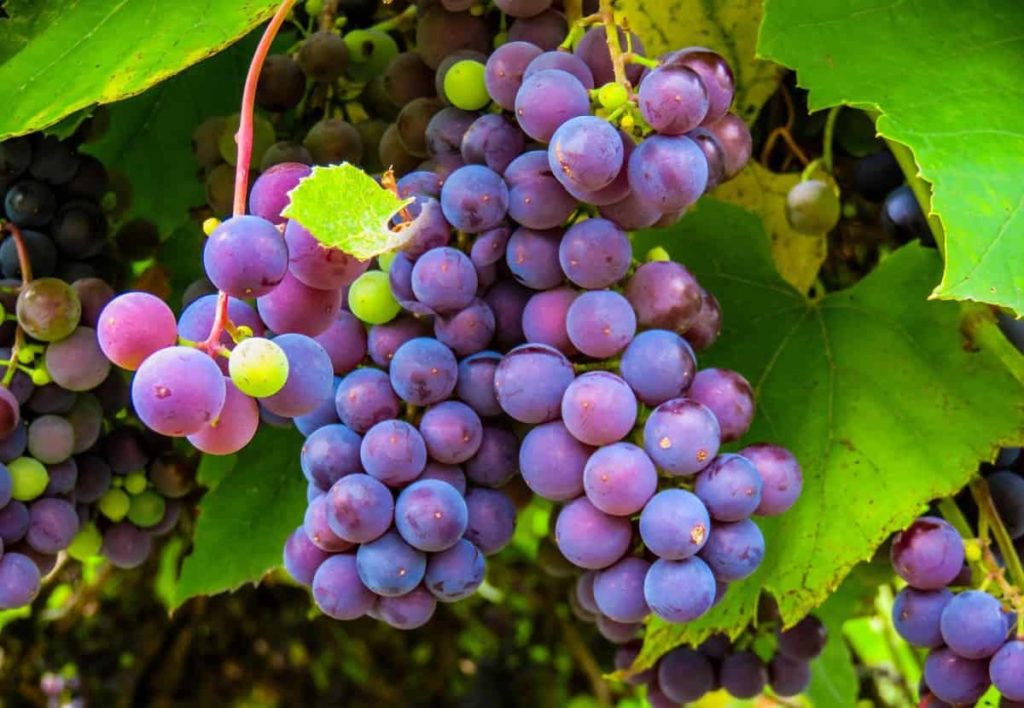
How to start Grapes farming in the USA
Grapes cultivated states in the USA
The state of California produced 6 million tons of Grapes. Washington, the nation’s second-largest producer of Grapes, produced only 325,000 tons this year. In addition to Arkansas, California, Georgia, Michigan, Missouri, New York, North Carolina, Ohio, Oregon, Pennsylvania, Texas, Virginia, and Washington, USDA, the National Agricultural Statistics Service (NASS) collects Grape production.
The West Coast – California, Washington, and Oregon account for over 90% of all US vine farming. New Mexico and Arizona are notable in the southwestern United States. Colorado and Idaho are notable in the Rocky Mountain region.
Find the best location to plant your Grapes
It would help if you had a large, open, sunny spot with good soil for growing Grapes. Grapes require about 50 to 100 square feet per vine if grown vertically on trellises or arbors and about 8 feet between rows if planted horizontally in rows. While they will grow in a range of soils, they will thrive in well-drained, rich, organic soil (vines cannot tolerate wet feet) mixed with plenty of compost or soil conditioner. In addition, all-around air circulation helps fight fungal diseases such as powdery mildew.
Preparing vines for planting
- Spring planting is recommended to give young Grape vines as much time as possible to establish before their first winter in Minnesota. Three vines are soaking in a bucket of water. When planting bare-root vines, soak the roots in a bucket of water for 3-4 hours before planting.
- When you get the plants, please keep them in a cool place where the root system is moist. It would help if you planted vines as soon as possible.
- Local nurseries also have potted vines. These Grape vines should also be planted as soon as possible, but time is not so important since the roots are growing.
- When planting, remove all but the strongest canes.
- Plant vines with the lowest buds on sugarcane just above the soil surface. Cut off any broken or excessively long roots.
- Dig a hole big enough for the root system to spread out and then cover the roots completely with soil.
- Mulching is generally not recommended for Grapes because the mulch will keep the soil temperature too cold.
Site Selection for Grape Farming in the USA
Site selection is essential when planning a Grape vineyard. Significant factors to be considered for a particular site are minimum winter temperatures, frequency of spring frosts, length of the growing season, and total growing days (50°F, 20 days between April 1 and October 31). Grapes need full sun to ripen properly and develop full flavors.
If possible, choosing a sunny hillside location will also provide the benefit of better ventilation to reduce the risk of frost. Vines should be grown in well-drained soil. Planting in deep soil has its advantages as it enables the vines to develop a large root structure, thus reducing the potential for drought stress in dry years. The proximity of irrigation supplies for drought should also be considered.
Grape varieties in the USA
The widely grown Grape variety in the USA is the Sultana; these Grapes are either eaten or dried into raisins. There are 148,000 acres (60,000 hectares) of this Grape, so 14% of the total area is under vines in the United States. In addition, Concord has 34,000 hectares. This Grape can be made into wine occasionally, mainly on the East Coast, but today it is more famous for jellies, juices, and jams. Muscadine, a bunch of Grapes, and a hybrid are other varieties.
Most table and wine grapes grown in North America come from the southern European Grape (V. vinifera). Adapted to Mediterranean climates, wine Grape species are “Riesling,” “Pinot Noir,” “Cabernet Sauvignon,” and “Zinfandel” varieties thrive in USDA zones 7 through 10. Seedless table Grape varieties such as “Flame Seedless” and “Thompson Seedless” can also be made into wine but are eaten as fresh Grapes or for dried purposes like raisins.
Muscadine Grape (V. rotundifolia), also called “Bullace,” “Scuppernong,” “Muscadine,” and “Southern Fox Grape,” is native to the southeastern United States. It grows from Delaware to Florida and as far west as Texas in USDA zones 5 through 10, covering trees and houses with 60- to 100-foot-tall vines. Despite living in the humid South, Muscadine Grape varieties are also grown in California and Oregon wine-growing microclimates.
In case you missed it: Growing Grapes In Greenhouse – Farming, Cultivation, Production In India
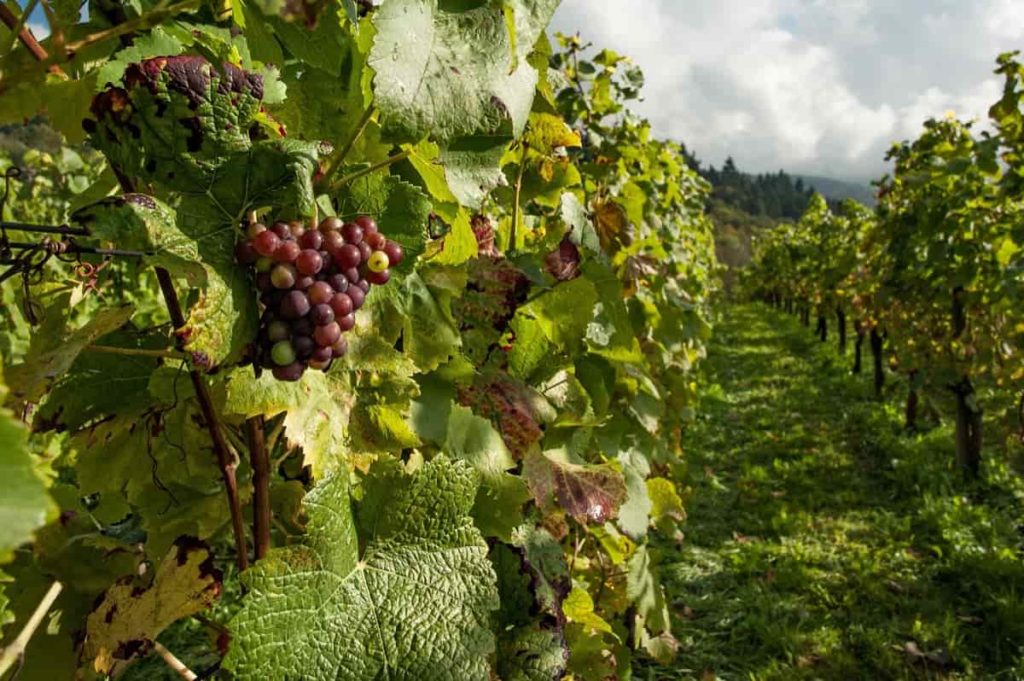
Native to the West Coast, the California wild Grape (V. californica) grows from California to southwestern Oregon. Hardy in USDA zones 7a through 10b, wild species are planted as wildlife habitats and to restore degraded riparian areas. Used mainly as an ornamental because of its bright autumn colors, the wild Grape and its hybrids “Roger Red” and “Walker Ridge” are eaten as fresh Grapes to make juices and jellies.
Several Grape varieties will produce well in cool climates for the homeowner’s backyard conditions. In commercial Grape production, the goal is to produce a consistent, high-quality product. An appropriate selection of varieties that fit both the planting site and local consumer preferences is critical to the success of this enterprise. Before choosing, thoroughly research the characteristics of different Grape varieties best suited to your production situation.
Consider winter hardiness, bud break time, and proper ripening requirements (it’s important to know the specific length of the growing season and total growing degree days for your location). Also, weighing both the positive and negative horticultural qualities of the varieties you’re considering is important.
The Grape growing season in the USA
In the United States, the peak Grape season is from August to October. However, the winter season is an important part of the California table Grape varieties growing cycle. Plant growth stops temporarily, and the vine rests. This stage is called “dormancy.” At this time, growers harvest the vine and prepare it for the growing season. In early spring, small buds bloom on the vine, and green leaves appear. The form of the first green leaves through the bud scales is known as bud break.
Progress is slow at first. As the average temperature increases, growth and shoot length accelerate. After three or four weeks, the fastest growth period begins – where shoots can grow an average of an inch or more per day. As the days warm, the flowers open, then disperse to make way for small green Grapes that eventually ripen into bunches. Berry size increases rapidly. Sunlight and warm temperatures are important for Grapevine physiological functions (such as photosynthesis).
| States | Grapes in season |
| Alabama | mid-July till mid-October |
| Alaska | July till August |
| Arizona | May till September |
| Arkansas | July till September |
| California | May till December |
| Colorado | September till October |
| Connecticut | mid-August till October |
| Delaware | September till October |
| Florida | August till September |
Grape growing zones in the USA
The wine and table Grape varieties mostly grown in North America come from the southern European Grape (V. vinifera). Adapted to the Mediterranean climate, wine Grape varieties such as “Cabernet Sauvignon,” “Pinot Noir,” “Riesling,” and “Zinfandel” thrive in USDA zones 4 through 10.
Support or trellis for Grape vines
Vines need some support, or they run along the ground. Grape vines can also be grown along existing fences. Grape vines grow rapidly and become quite heavy. Grape vines can be trained and pruned into almost any shape and form. Once the Grape vines are planted, the trellis system must be constructed, followed by the installation of the drip irrigation system.
Building a trellis system is a considerable expense in establishing a vineyard. There are many trellis systems to choose from, and careful consideration must be given to deciding on a system. A trellis or training system that enables good fruit exposure and optimizes a large leaf area is critical to producing high-quality Grape clusters.
Fertilization management
Grapevines should only be fertilized if a soil test or leaf tissue analysis indicates a deficiency. Commercial manure or compost can be applied to the vineyard. Apply sparingly to avoid over-fertilizing the vines. Fertilization takes place two to three days after pollination.
The fruit-set stage occurs almost immediately after flowering when the fertilized flower begins to develop seeds and Grape berries to protect the seed. California table Grape varieties are mostly seedless – the seed stops developing soon after fertilization, resulting in seedless berries. Grape berries go through several stages of development, from being set to fully ripe.
Plant your new vine properly in the USA
Table Grape varieties don’t need a fancy support system. Vines need a horizontal structure that gives them the support they need and allows you to train them. In mild winter regions (USDA Zone 7 and warmer), you can plant vines in early winter. In colder areas, wait for early spring. Grape vines have deep roots (up to 15 feet), so dig a planting hole about two feet deep and wide and fertilize with compost.
In case you missed it: Organic Grapes Farming, Growing Practices
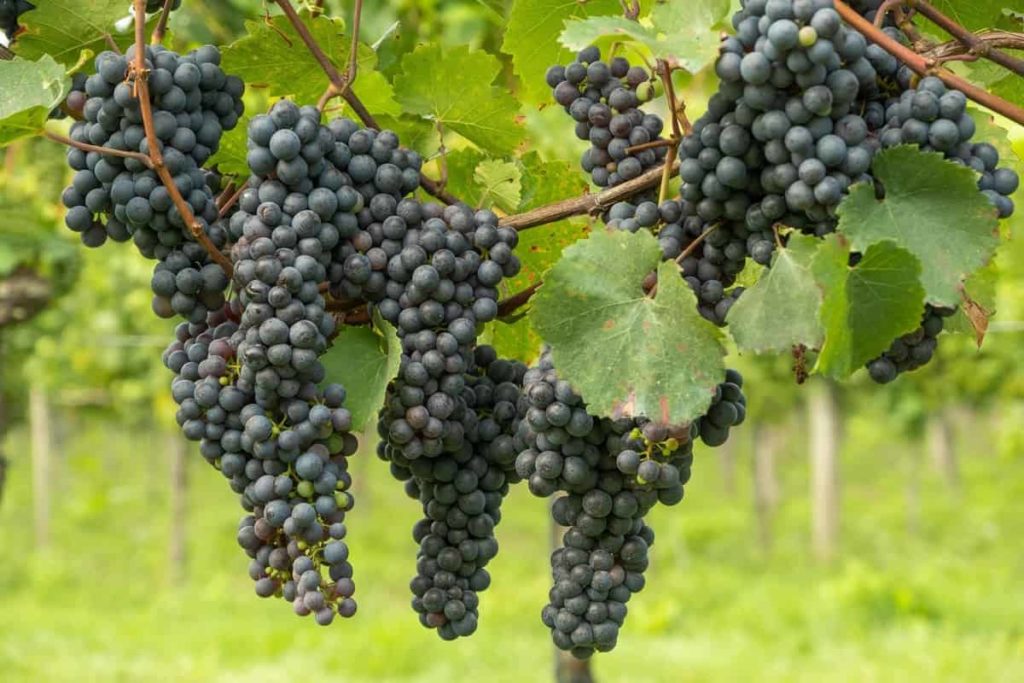
Dormancy/Pruning for Grape Plant Growth
Dormancy is a crucial stage in the annual cycle of the Grapevine when growth and development temporarily stop and the vine rests. Lower temperatures and shorter day lengths bring it about. At this time, growers harvest the vine and arrange it for the upcoming season.
Vine pruning and training are two of the most important aspects of quality Grape production. The two basic methods of pruning are spur and cane. Some varieties produce better crops (in terms of yield and quality) with cane harvesting, while others produce better crops with spur harvesting.
Grape production in the USA
Before planting any commercial vineyard, consult with a viticulturist in your area. Even in areas where desirable Grapes will grow, it is important to place the vineyard on the right type of soil, with adequate air and water drainage, fertility, subsoil makeup, and exposure to sunlight. The choice of Grape varieties to produce will mainly depend on what the market wants to buy. Build a strong relationship with any buyer before planting.
Grapes are grown in a vineyard field and the fruit of a vine plant. The vines are planted in rows evenly spaced six to 10 feet apart, and each row is 6 to 10 feet apart. A wire trellis supports the vines above ground for ease of vine maintenance and harvesting. A vineyard can cost $15,000 per acre plus the cost of the land before the first harvest in the third or fourth year after planting. Vineyards produce a very valuable crop.
The timely application of fertilizers, herbicides, pesticides, fungicides, and harvesting activities is essential to protect the crop. Other threats come from birds and deer that attack the crop at a high cost which must be controlled. Grapes are perennial plants, meaning the soil needs to be prepared for years of future growth. Amending the soil at planting time is critical to providing long-term nutrients and good drainage.
The vineyard manager will inspect the orchards or fields to determine the maturity or condition of the crop or to detect disease or pest infestation. Crop production operations like planning, tilling, planting, cultivating, spraying, fertilizing, or harvesting. Supervise activities like irrigation, milking, chemical application, harvesting, breeding, or grading to ensure adherence to safety regulations or standards.
Carefully plan crop activities based on factors like crop maturity or weather conditions. Maintain financial, production, or employment records for farms. Obtain necessary financing for the purchase of machinery, land, equipment, or livestock. Inspect farm or field equipment to ensure proper operation. Analyze the soil to determine the fertilizers needed for maximum crop production. A vineyard is a labor-intensive farming business. Much work is done by hand and in all kinds of weather, mainly hot and humid.
In case you missed it: How to Start Banana Farming in the USA: A Step-By-Step Guide to Planting to Harvesting
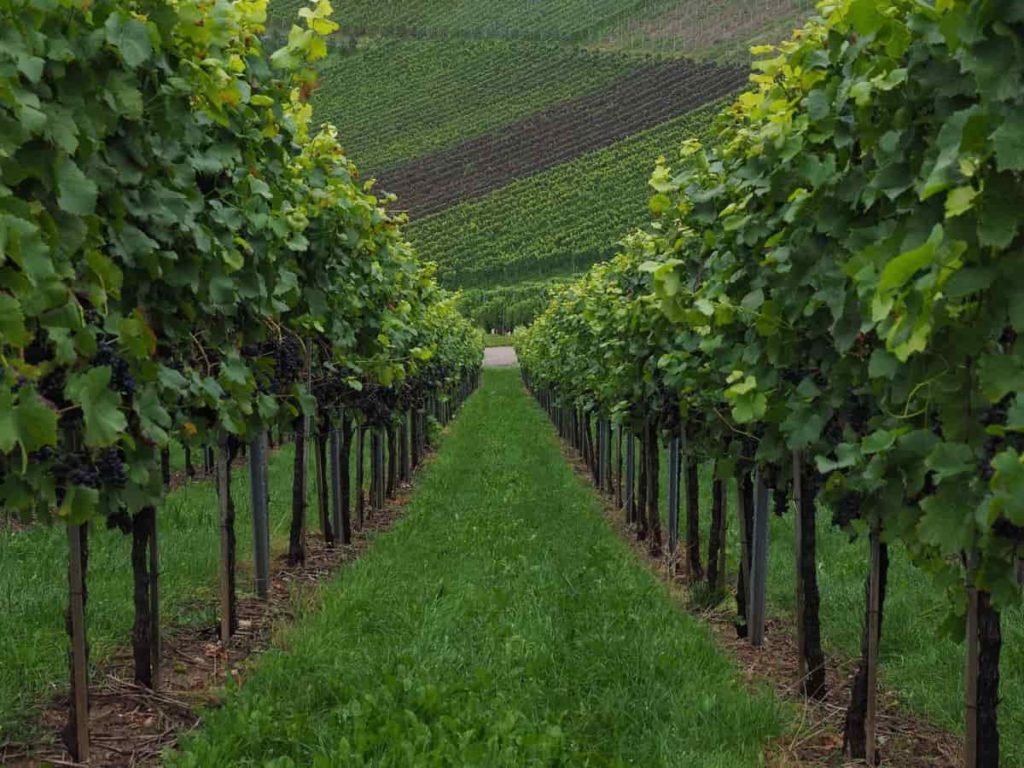
Vineyards are growing in every state of the country. Although Grapes will grow in most climates in the United States, Grape varieties grown for wine, food, or juice have a much more limited growing area. Before planting any commercial vineyard, consult with a viticulturist in your area. Even in areas where desirable Grapes will grow, it is essential to place the vineyard on the right type of soil, with adequate air and water drainage, fertility, and exposure to sunlight.
Planting tips for Grape farming in the USA
This process begins with choosing a specific Grape variety. Next, you will need to purchase vines or prepare your cuttings. Next, select a suitable location with plenty of suns with soil that is well-drained, acidic, and semi-fertile. You will want a trellis system to support vines. Finally, it would help if you determined when to plant (spring) and finally plant your vines.
Choose a site with full sun. If you don’t have a full sun spot, ensure it gets at least morning sun. Your soil should be deep, well-drained, and loose. The vines will need to be trained for some support to grow upwards. It will reduce the risk of disease in plants. Help is required when planting. Don’t fertilize the first year unless you have a soil problem. Add a light fertilizer in the second year of plant growth.
Mesh netting is helpful in keeping birds away from emerging fruits. Pruning is essential. Grapes bear fruit on shoots growing from one-year-old canes. You will get fewer Grapes if you have too many old canes (without pruning). If you prune your vines yearly, you get lots of new growth but fewer vines.
Managing diseases and pests
Most pests and other problems can be minimized by planting vines in a sunny location with good air circulation. Weather conditions, variety of winter hardiness, infestation from the previous year, history of pesticide use, and influence of surrounding vegetation can affect vine susceptibility for a particular year.
Good air circulation is essential to prevent most diseases. After harvesting, pull the cuttings away from the vines. These practices will eliminate some of the spots that winter disease can infect next spring. If possible, diseased parts of the vine should be removed and discarded at the first sign of disease to prevent its spread to the rest of the vine.
Grape harvesting season in the USA
Depending on your region’s climate, Grape harvesting usually begins in mid-August and continues until the end of September. Table Grapes must be pruned several times for the best quality fruit and full ripening. However, Grapes absorb odors, so avoid storing produce like onions or leeks nearby.
Grapes are usually harvested directly into plastic pieces designed for Grapes. These nests can be avoided by turning the stacks 180 degrees when not used and during harvesting to avoid crushing the fruit below. In addition to creating a visually appealing cluster, attractive packaging will aid marketability. Many packaging options are available, but the possibilities include clear plastic clamshells and perforated polyethylene bags.
Harvest Quality – Grapes are harvested fully ripe. After they are picked, they are not very sweet, so timing is everything. Once picked, fresh Grapes are easily spoiled by rough handling, hot temperatures, excessive humidity, and rotting organisms. Consequently, the bunches of Grapes are carefully inspected and then immediately packed by hand into shipping containers – often right in the field.
Grapes are mature and ready to harvest when their seeds turn from green to brown. It is also when their flavor peaks. Note that Grapes will not taste better after harvesting. Harvest month depends on the variety. Grapes are generally soft and develop a sweet and less acidic flavor as they ripen. Use both skin color and flavor as predictors of ripeness. You may be disappointed if you use color alone, as the Grapes can color before they are ripe. It’s a shame to cut your Grapes before they reach their ideal size and sweetness.
Grapes marketing in the USA
Some farmers in the eastern USA are growing and selling table Grapes; there is currently a very limited market for locally grown table Grapes. Most table Grapes consumed in the USA are grown in California and South America. These Grapes are seedless and have a slightly milder flavor than most table Grape varieties in the eastern United States. However, tasting panels and farm marketers who have offered locally grown table Grapes have met with enthusiastic acceptance.
Table Grapes are another option for farmers to meet the growing demand for locally produced food products. If you are trying to sell through a local grocery store, you need to check with the product manager to find out what kind of packaging they need, how much they are willing to market, and when they prefer to receive Grape deliveries. Prices in the few markets offering these Grapes are significantly higher than local grocery store prices for domestic and imported Grapes.
Grapes yield in the USA
Approximately 5,940,000 tons of Grapes were grown commercially in the United States. California had 5,615,000 tons. Other top Grape-growing states in the USA include Washington and New York.
In case you missed it: How to Start Tomato Farming in the USA: A Step-by-Step Production Guide to Planting to Harvesting
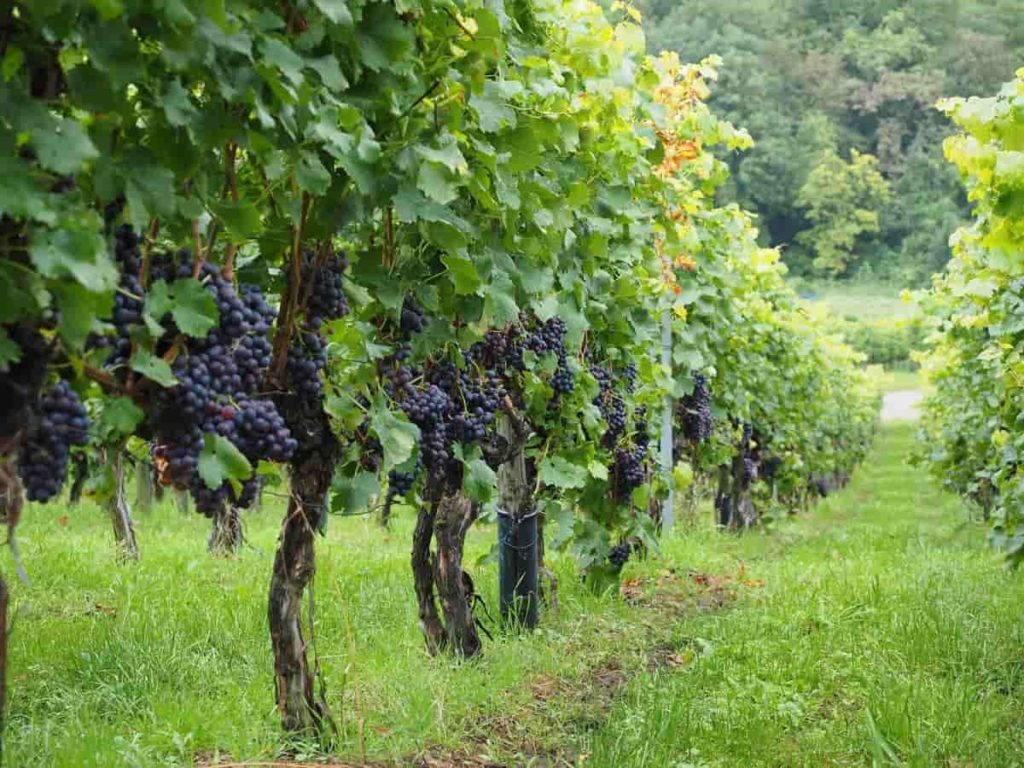
Frequently asked questions about Grapes farming in the USA
Where in the US can you grow Grapes?
Top Grape-growing states in the USA include Washington and New York. Some other Grape production areas are Arkansas, California, Georgia, Michigan, Missouri, New York, North Carolina, Ohio, Oregon, Pennsylvania, Texas, Virginia, and Washington.
How profitable is growing Grapes?
A grower may find they can obtain 5 tons of quality fruit and sell it for $3,000 per ton, making a gross profit of $15,000 per acre.
Where are the vineyards in America?
The vineyards of the North Coast, San Joaquin Valleys, Southern California, Central Coast, Sacramento, and the Sierra Foothills. Oregon’s wine regions include parts of popular American viticultural areas such as the Willamette Valley, Southern Oregon, Umpqua Valley, Rogue Valley, and Columbia Valley.
Where does America get its Grapes from?
Chile and Mexico supply about 98 percent of imported US table Grapes; most of these varieties are imported during the off-season months. Table Grapes are mainly imported from Chile from January to April.
Can Grapes grow in New York?
Like France, New York has many areas where Grapes grow well. In the extreme north are the Grape-growing areas: Lake Erie, Thousand Island, and Niagara Escarpment. In the south, the Grape cultivating areas are the Finger Lakes, the Hudson River Valley, and Long Island.
Can Grapes grow in Florida?
Grape varieties grow in Florida: Muscadine, Bunch Grapes, and a hybrid. Some varieties have male and female reproductive parts and do not require pollination. Others, however, have only female flowers and should be planted within 25 feet of the self-fertile variety.
In case you missed it: How to Start Pumpkin Farming in the USA: A Step-By-Step Planting to Harvesting Guide
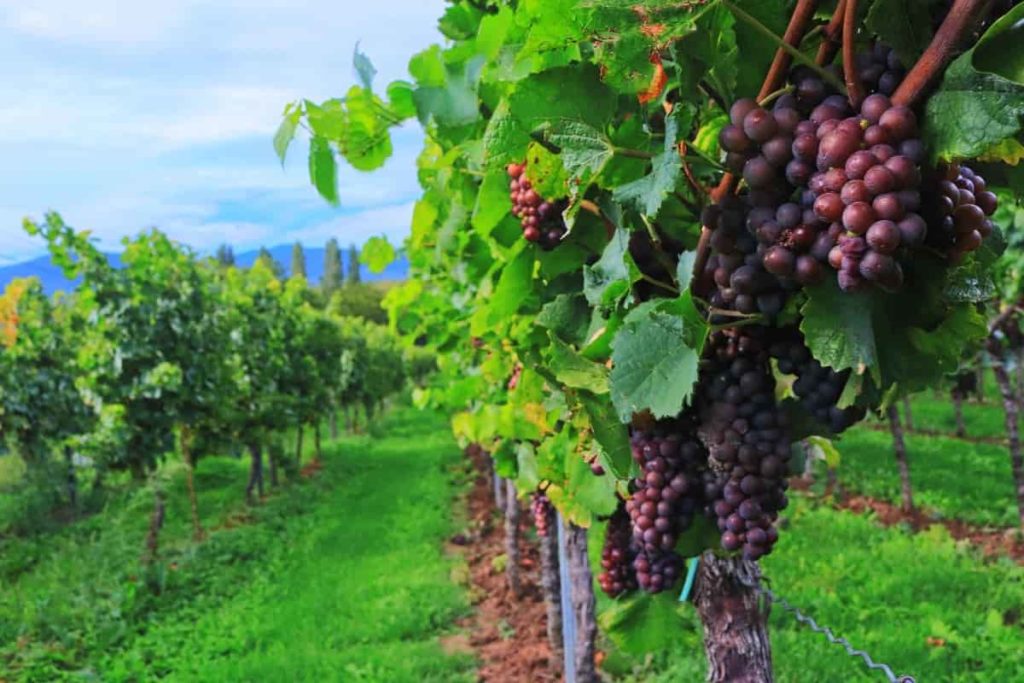
How many Grape vines should I plant?
Mature Grapes can produce 15 to 30 pounds per vine. Maybe you want to plant a couple of vines. Mature wine Grapes yield approximately 12 pounds per vine, and it takes about 40 pounds to make 12 bottles. If it is for making wine, you’ll need a lot of Grapes.
Conclusion
Grapes will grow in most climates in the United States; Grape varieties grown for wine, food, or juice have a much more limited growing area. To grow and produce high-quality Grapes, the vines must be exposed to adequate sunlight, heat, and water during the growing season and cold during the dormant stage. Warm summers and rainy winters are ideal conditions for Grape vines. This information is especially useful for Grape farming in the USA.
- Economical Aquaculture: A Guide to Low-Budget Fish Farming
- 15 Common Planting Errors That Can Doom Your Fruit Trees
- How to Make Houseplants Bushy: Effective Tips and Ideas
- Innovative Strategies for Boosting Coconut Pollination and Yield
- Pollination Strategies for Maximum Pumpkin Yield
- The Complete Guide to Chicken Fattening: Strategies for Maximum Growth
- Natural Solutions for Tulip Problems: 100% Effective Remedies for Leaf and Bulb-Related Issues
- Revolutionizing Citrus Preservation: Towards a Healthier, Greener Future
- Natural Solutions for Peony Leaf and Flower Problems: 100% Effective Remedies
- Maximizing Profits with Avocado Contract Farming in India: A Comprehensive Guide
- Natural Solutions for Hydrangea Problems: 100% Effective Remedies for Leaf and Flowers
- The Ultimate Guide to Choosing the Perfect Foliage Friend: Bringing Life Indoors
- From Sunlight to Sustainability: 15 Ways to Use Solar Technology in Agriculture
- The Ultimate Guide to Dong Tao Chicken: Exploring from History to Raising
- The Eco-Friendly Makeover: How to Convert Your Unused Swimming Pool into a Fish Pond
- Mastering the Art of Delaware Chicken Farming: Essentials for Healthy Backyard Flocks
- 20 Best Homemade Fertilizers for Money Plant: DIY Recipes and Application Methods
- How to Craft a Comprehensive Free-Range Chicken Farming Business Plan
- Brighten Your Flock: Raising Easter Egger Chickens for Beauty and Bounty
- How to Optimize Your Poultry Egg Farm Business Plan with These Strategies
- Subsidy for Spirulina Cultivation: How Indian Government Schemes Encouraging Spirulina Farmers
- Ultimate Guide to Raising Dominique Chickens: Breeding, Feeding, Egg-Production, and Care
- Mastering the Art of Raising Jersey Giant Chickens: Care, Feeding, and More
- Ultimate Guide to Raising Legbar Chickens: Breeding, Farming Practices, Diet, Egg-Production
- How to Raise Welsummer Chickens: A Comprehensive Guide for Beginners
- How to Protect Indoor Plants in Winter: A Comprehensive Guide
- Ultimate Guide to Grow Bag Gardening: Tips, Tricks, and Planting Ideas for Urban Gardeners
- Guide to Lotus Cultivation: How to Propagate, Plant, Grow, Care, Cost, and Profit
- Agriculture Drone Subsidy Scheme: Government Kisan Subsidy, License, and How to Apply Online
- Ultimate Guide to Raising Araucana Chickens: Breed Profile, Farming Economics, Diet, and Care
- Bringing Hydroponics to Classroom: Importance, Benefits of Learning for School Students
- Ultimate Guide to Raising Polish Chickens: Breed Profile, Farming Economics, Diet, and Care
- Ultimate Guide to Raising Australorp Chickens: Profile, Farming Economics, Egg Production, Diet, and Care
- Silkie Chicken Farming: Raising Practices, Varieties, Egg Production, Diet, and Care
- Sussex Chicken Farming: Raising Practices, Varieties, Egg Production, Diet and Care
- Homemade Feed Formulations for Livestock: Discover Cost-effective Starter to Finisher Feed Recipes